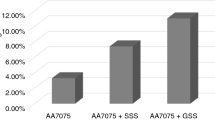Abstract
An aluminosilicate waste form has been proposed for the storage and disposal of cesium and strontium isolated from recycled nuclear fuel. To examine the impact of sintering temperature on the waste form product, thermal analysis (thermogravimetric analysis (TGA) and differential scanning calorimetry (DSC)) was used to identify key transition temperature ranges. Samples were produced in each temperature range to examine the impact on phase formation and microstructure. Examination of the synthesized materials by X-ray diffraction (XRD) confirmed the formation of the expected Cs- and Sr-aluminosilicate crystalline phases. However, microscopic characterization by scanning electron microscopy (SEM) revealed a spongelike, glassy morphology with high porosity and no observed crystallinity. This discrepancy was investigated by transmission electron microscopy (TEM) and high-resolution TEM (HRTEM), which identified the presence of discrete, submicron, crystalline phases within the bulk amorphous matrix. Elemental analysis by energy-dispersive X-ray (EDX) indicated that the strontium and barium were incorporated into the crystalline phase, while the cesium was incorporated into the amorphous matrix. Further analysis of samples synthesized without barium or strontium allowed for the identification of submicron crystalline phases within the amorphous matrix, identifying the source of the cesium aluminosilicate crystal peaks in the XRD patterns, with elemental analysis showing that the cesium was present in both the crystalline inclusions and the amorphous bulk phase.
















Similar content being viewed by others
Notes
VOCLAY is a trademark of American Colloid Company, Hoffman Estates, IL.
JEOL is a trademark of Japan Electron Optics Ltd., Tokyo.
References
S. Clark and R.C. Ewing: Basic Research Needs for Advanced Nuclear Energy Systems, Office of Basic Energy Sciences, U.S. Department of Energy, Washington, DC, 2006, pp. 59–73.
M.T. Peters, R.C. Ewing, and C.I. Steefel: “GNEP Waste Form Campaign Science & Technology and Modeling & Simulation Program: Roadmap With Rationale & Recommendations,” prepared for the U.S. Department of Energy, Global Nuclear Energy Partnership, and the Waste Form Campaign, GNEP-M50-3040-303 and GNEP-M50-3030-101, Mar. 14, 2008.
I.W. Donald. B.L. Metcalfe, and R.N.J. Taylor: J. Mater. Sci., 1997, vol. 32, pp. 5851–87.
W.E. Lee, M.I. Ojovan, M.C. Stennett, and N.C. Hyatt: Adv. Appl. Ceram., 2006, vol. 105, pp. 3–20.
L.P. Hatch: Am. Scientist, 1953, vol. 41, p. 410.
D.M. Strachan and W.W. Schulz: “Glass and Ceramic Materials for the Immobilization of Megacurie Amount of Pure Cerium-137,” U.S. Department of Energy Research Report under Contract No. E(45-1)-2310, Apr. 1975.
G.S. Barney: “Immobilization of Aqueous Radioactive Cesium Wastes by Conversion to Aluminosilicate Minerals,” ARH-SA-218, Atlantic Richard Hanford Company Report, Richland, WA, May 1975.
V. Viswabaskaran, F.D. Gnanama, and M. Balasubramanian: Ceram. Int., 2003, vol. 29, pp. 561–71.
O.D. Velev, T.A. Jede, R.F. Lobo, and A.M. Lenhof: Chem. Mater., 1998, vol. 10, pp. 3597–3602.
Acknowledgments
This project is funded under the auspices of the United States Department of Energy (Grant Nos. DE-FG07-01AL67358 and DE-FC07-06ID14781). The authors also thank the UNLV TRP (Transmutation Research Program), administered by Dr. Tony Hechanova, Harry Reid Center for Environmental Studies, University of Nevada, Las Vegas, for supporting this work. Helpful discussions with Dr. Thomas Hartmann, Harry Reid Center for Environmental Studies, and Dr. Clay Crow, Department of Geoscience, University of Nevada, Las Vegas, regarding XRD analysis and interpretation are also appreciated.
Author information
Authors and Affiliations
Corresponding author
Additional information
This article is based on a presentation given in the symposium “Materials for the Nuclear Renaissance,” which occurred during the TMS Annual Meeting, February 15–19, 2009, in San Francisco, CA, under the auspices of Corrosion and Environmental Effects and the Nuclear Materials Committees of ASM-TMS.
Rights and permissions
About this article
Cite this article
Cerefice, G., Ma, L. & Kaminski, M. Microscopic and Spectroscopic Characterization of Aluminosilicate Waste Form with Cs/Sr/Ba Loading Using Scanning Electron Microscopy, Transmission Electron Microscopy, and X-Ray Diffraction. Metall Mater Trans A 40, 2876–2887 (2009). https://doi.org/10.1007/s11661-009-0038-4
Published:
Issue Date:
DOI: https://doi.org/10.1007/s11661-009-0038-4




